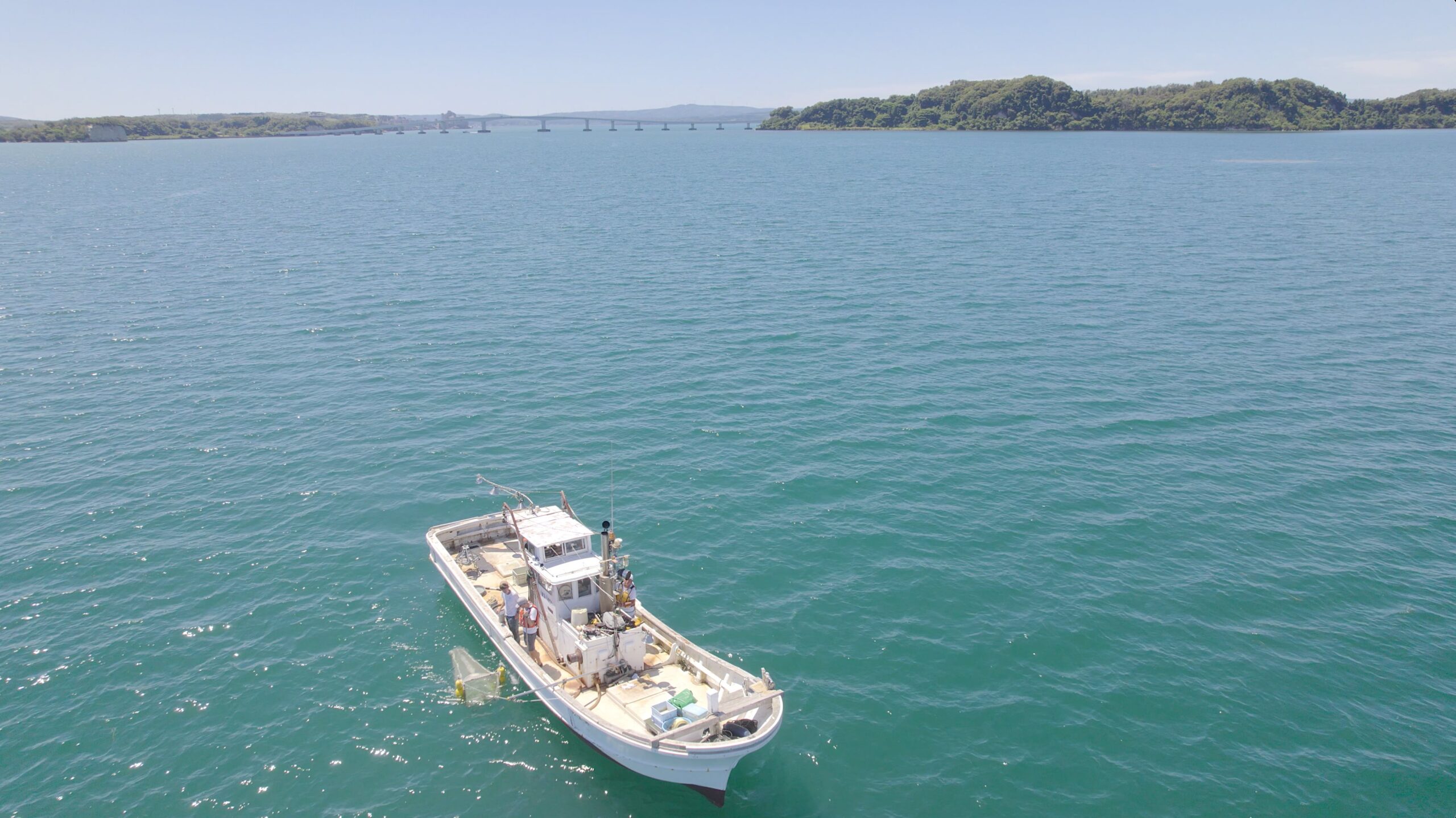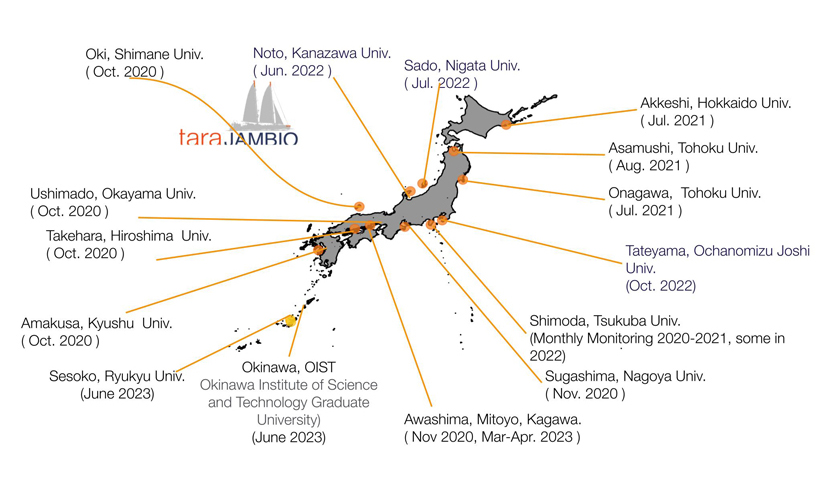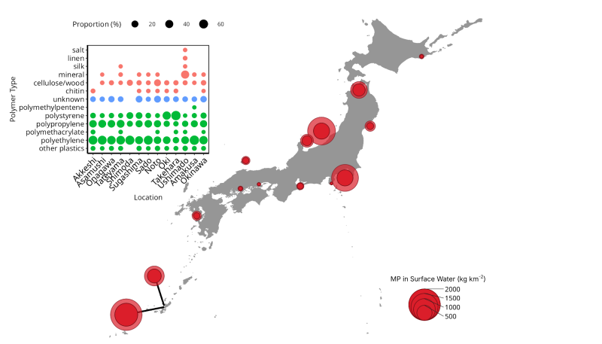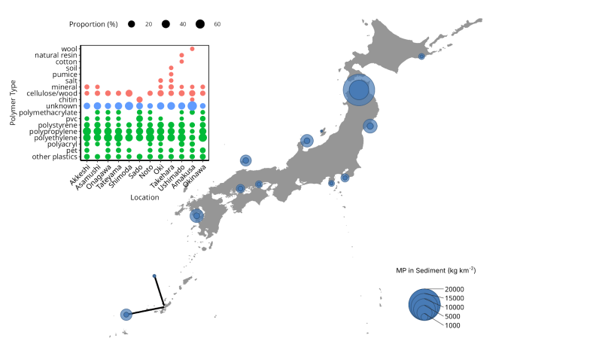An Integrated Assessment of Microplastic Pollution in Coastal Surface Water and Sediment of Japan
 The Tara-JAMBIO Microplastic Joint Survey is a collaboration between Tara Océan Japan, the Japanese branch of the Tara Océan Foundation, and JAMBIO. Tara Océan has conducted expeditions to observe and understand marine life, from plankton to coral reefs, and the impact of climate change and anthropogenic stressors. These expeditions are conducted with the schooner Tara. Tara Océan Japan was founded in 2016 and the Tara-JAMBIO Joint Microplastic Survey is the first local project. It aims to provide knowledge on the status of microplastic pollution in coastal areas all around Japan. Such large-scale survey was only possible with the infrastructure provided by JAMBIO. More than just scientific research, the project includes outreach events for adults and children to increase awareness on the importance of marine ecosystems and the threats they are facing, including microplastic pollution and climate change. Overall, 11,930 people participated in the activities that ranged from beach microplastic sampling to the screening of the movie “Microplastic Story”. Finally, similarly to the other Tara expeditions, with the support of the Tokyo University of the Arts, artists joined the survey and later produced art pieces that have been exhibited in Awashima, Kagawa and at Tokyo University of Arts.
The Tara-JAMBIO Microplastic Joint Survey is a collaboration between Tara Océan Japan, the Japanese branch of the Tara Océan Foundation, and JAMBIO. Tara Océan has conducted expeditions to observe and understand marine life, from plankton to coral reefs, and the impact of climate change and anthropogenic stressors. These expeditions are conducted with the schooner Tara. Tara Océan Japan was founded in 2016 and the Tara-JAMBIO Joint Microplastic Survey is the first local project. It aims to provide knowledge on the status of microplastic pollution in coastal areas all around Japan. Such large-scale survey was only possible with the infrastructure provided by JAMBIO. More than just scientific research, the project includes outreach events for adults and children to increase awareness on the importance of marine ecosystems and the threats they are facing, including microplastic pollution and climate change. Overall, 11,930 people participated in the activities that ranged from beach microplastic sampling to the screening of the movie “Microplastic Story”. Finally, similarly to the other Tara expeditions, with the support of the Tokyo University of the Arts, artists joined the survey and later produced art pieces that have been exhibited in Awashima, Kagawa and at Tokyo University of Arts. The results on the assessment of microplastic pollution and potential source and pathways in coastal areas of Japan was published in Environmental Science and Technology, 2025 (https://doi/10.1021/acs.est.5c02645) Through surveys were conducted at a total of 15 marine stations from the north Hokkaido to the south Okinawa, starting October 2020 and ending June 2023.A dataset of 110 samples (53,557 particles) was compiled from both surface water and sediments. 11,699 particles were chemically characterized by Fourier Transform Infrared Spectroscopy (µFT-IR). The mean microplastic concentration for surface water was 288.7 ± 651.6 g km-2 and sediment were 1,185 ± 3,829 kg km2. Environmental and socio-economic factors such as rainfall, population, aquaculture, and fisheries were shown to be major inputs of microplastics in coastal areas. Maritime activities are a non-negligible source of input, since fragmentation and break-down of larger items of derelict macro-litter from aquaculture and fisheries increase the likelihood of microplastic pollution. Polymers such as PE, PP and PS were found to be present and dominant in both matrices, confirming the direct link between usage and leakage that occurs in the environment, since these polymers are most commercially produced for packaging and single-use applications globally. However, greater work is necessary to further elucidate the sources and pathways and how they affect the occurrence, fate, and transport of microplastics in the coastal environment. Overall, there exists an urgent need for education, legislation, and implementation of waste management systems for both land and maritime activities to prevent further leakage into the ocean.
The results on the assessment of microplastic pollution and potential source and pathways in coastal areas of Japan was published in Environmental Science and Technology, 2025 (https://doi/10.1021/acs.est.5c02645) Through surveys were conducted at a total of 15 marine stations from the north Hokkaido to the south Okinawa, starting October 2020 and ending June 2023.A dataset of 110 samples (53,557 particles) was compiled from both surface water and sediments. 11,699 particles were chemically characterized by Fourier Transform Infrared Spectroscopy (µFT-IR). The mean microplastic concentration for surface water was 288.7 ± 651.6 g km-2 and sediment were 1,185 ± 3,829 kg km2. Environmental and socio-economic factors such as rainfall, population, aquaculture, and fisheries were shown to be major inputs of microplastics in coastal areas. Maritime activities are a non-negligible source of input, since fragmentation and break-down of larger items of derelict macro-litter from aquaculture and fisheries increase the likelihood of microplastic pollution. Polymers such as PE, PP and PS were found to be present and dominant in both matrices, confirming the direct link between usage and leakage that occurs in the environment, since these polymers are most commercially produced for packaging and single-use applications globally. However, greater work is necessary to further elucidate the sources and pathways and how they affect the occurrence, fate, and transport of microplastics in the coastal environment. Overall, there exists an urgent need for education, legislation, and implementation of waste management systems for both land and maritime activities to prevent further leakage into the ocean.


Press links and announcements:
日本発のローカル科学プロジェクト | Tara JAMBIO マイクロプラスチック共同調査
https://jp.fondationtaraocean.org/news-expedition/microplastic-survey-paper/
Latest research to clarify the reality of microplastic pollution along the coast of Japan | Press release of Tara Ocean Japan
